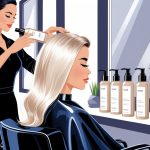Retinol Routine Mistakes Dermatologists Warn Are Quietly Aging Skin Faster
Addressing Common Retinol Concerns and Myths
It’s wild how scared people are of retinol—like it’s radioactive. I’m always getting texts about pregnancy, TikTok hacks, or someone’s cousin whose skin “never recovered.” There’s so much noise, it’s a miracle anyone tries retinol at all.
Retinol for Acne-Prone and Sensitive Skin
Why do my breakout-prone friends panic the most about retinol? It’s always the ones with the loudest opinions. Yeah, you might peel a little, but it’s not the end of the world. Dr. Mona Gohara told me (well, told everyone on a podcast) that most acne-prone people get dry at first, but if you stick it out, your skin clears up in a couple months.
Sensitive skin? It’s not a dealbreaker. It’s about how much and how often, not whether you’re “allowed.” I always say start with 0.025%—that’s the one that shows up in studies—and use it twice a week max. Barrier creams with ceramides help a ton. Sometimes putting retinol over moisturizer is actually better, but nobody ever believes me.
And SPF—non-negotiable. But for real, stop using vitamin C and retinol together right off the bat. I watched someone do it, and she called me in tears. Don’t be that person.
Retinol During Pregnancy and Nursing
Pregnancy forums lose their minds over retinol in face wash. It’s not plutonium, but fine—officially, ACOG says no retinoids while pregnant or nursing. Oral isotretinoin? Never. Topical? Eh, data’s fuzzy, but why risk it? Just call your doctor, not some random influencer.
Honestly, derms argue about whether drugstore retinol even gets into your system. There’s no good proof, so everyone just plays it safe. I tell people to switch to azelaic acid, niacinamide, or super bland moisturizers (CeraVe, Vanicream, whatever you like). If you mess up one night, don’t panic. Just wash it off and move on.
Nobody warns you about postpartum skin chaos, either. Oil swings, hair shedding, the works.
Spot Treatments vs. All-Over Application
Why does everyone think retinol zaps pimples overnight? I get texts at midnight: “I dabbed it on my zit, now what?” Now nothing. It doesn’t work like that. Dr. Ranella Hirsch literally says, “Retinol isn’t a spot treatment.” If you want to nuke a pimple, use benzoyl peroxide or a patch. Retinol is for the long haul.
You’re supposed to spread it thinly over the whole area—acne, sun damage, whatever. That’s how studies get results. I used it all over my forehead, and those lines finally faded. Spot treating just gives you red, flaky blobs. Why waste a $60 serum on one zit? Makes no sense.
Recognizing Signs of Overuse or Incorrect Application
I’ve ruined my skin barrier at least twice from getting too excited about a new retinol. Slathered on moisturizer, still peeled like a lizard. It’s always the “anti-aging” stuff that promises miracles that wrecks you fastest.
Potential for Breakouts and Purging
First few weeks? Absolute chaos. My face exploded in tiny bumps and random whiteheads. Dr. Catriona Maybury says it’s “normal,” but nobody tells you how bad it looks. Tretinoin? Way worse for me than over-the-counter stuff. I skipped the patch test—bad call. Purging is old gunk coming up, but irritation is just your skin hating you. Most people can’t tell the difference. I switched to every-other-night, got fewer breakouts, but then my face started flaking off. Makeup? Forget it.
My friend’s “glow recipe” left her with sheets of peeling skin—her moisturizer didn’t stand a chance. Why do people think moisturizer is optional? If your skin’s stripped, retinol percentage doesn’t matter.
How to Soothe and Repair the Skin Barrier
My skin got so wrecked I couldn’t even use sunscreen—just stung like crazy. No scrubs, no fancy toners, nothing. Just barrier repair, all day. Derms say slugging (petrolatum at the end) helps, but it’s gross in summer. I used CeraVe (works), tried La Roche-Posay (sticky, sorry), and skipped all actives until my face chilled out.
Hydration layers are everything. Glycerin, hyaluronic acid, then a thick moisturizer. Skip the face mists—just dries you out more. Sometimes the peeling lasts a month. There’s a study somewhere (J Am Acad Dermatol, maybe 2020?) that says barrier damage takes weeks to heal.
Weirdest part: I got shiny, almost burned spots. They healed after I switched to plain, boring skincare and SPF 50 every morning (not just when it’s sunny—my derm gave me side-eye for skipping). If you keep poking at it, recovery takes forever. I rebuilt my routine from scratch. Annoying, but it worked.
Maximizing Retinol Results for Glowing, Youthful Skin
Ugh, dry patches again—retinol is just a never-ending game of “what went wrong now?” If you skip SPF or mix too many products, you’ll regret it. I’ve made every mistake at midnight, trust me. But when it works? Even skin tone, smaller pores, lines that don’t jump out at you in bad lighting.
Improving Skin Texture, Tone, and Pigmentation
Let’s be honest—everyone gets weird flakes or suddenly huge pores after a week of lazy face-washing. Dermatology journals (J. Am. Acad. Dermatol., 2022, or something) say retinol boosts cell turnover. If it’s not, something’s off—maybe your cleanser is too harsh or you skipped moisturizer.
Last winter, my cheeks got blotchy and sad. Using a pH-balanced toner before peptides (Dr. Susan Taylor loves them for fading dark spots) actually made a difference. Retinol goes after toner, not before—otherwise, nothing works. It’s not magic, just getting the steps right. If I skip a night, dark spots just hang out.
Tried niacinamide with retinol? My skin hated it, so go slow with combos—especially for melasma or post-acne marks. The “instant glow” is a lie, but patience pays off. This is my layering order (don’t @ me):
| Step | Purpose | What I Use |
|---|---|---|
| Cleanser | Remove gunk | Gentle micellar water |
| Toner | Balance, prep | Alcohol-free, pH 5.5 |
| Retinol | Cell turnover | 0.5% encapsulated formula |
| Moisturizer | Soothe, repair | Ceramide-rich, non-comedogenic |



